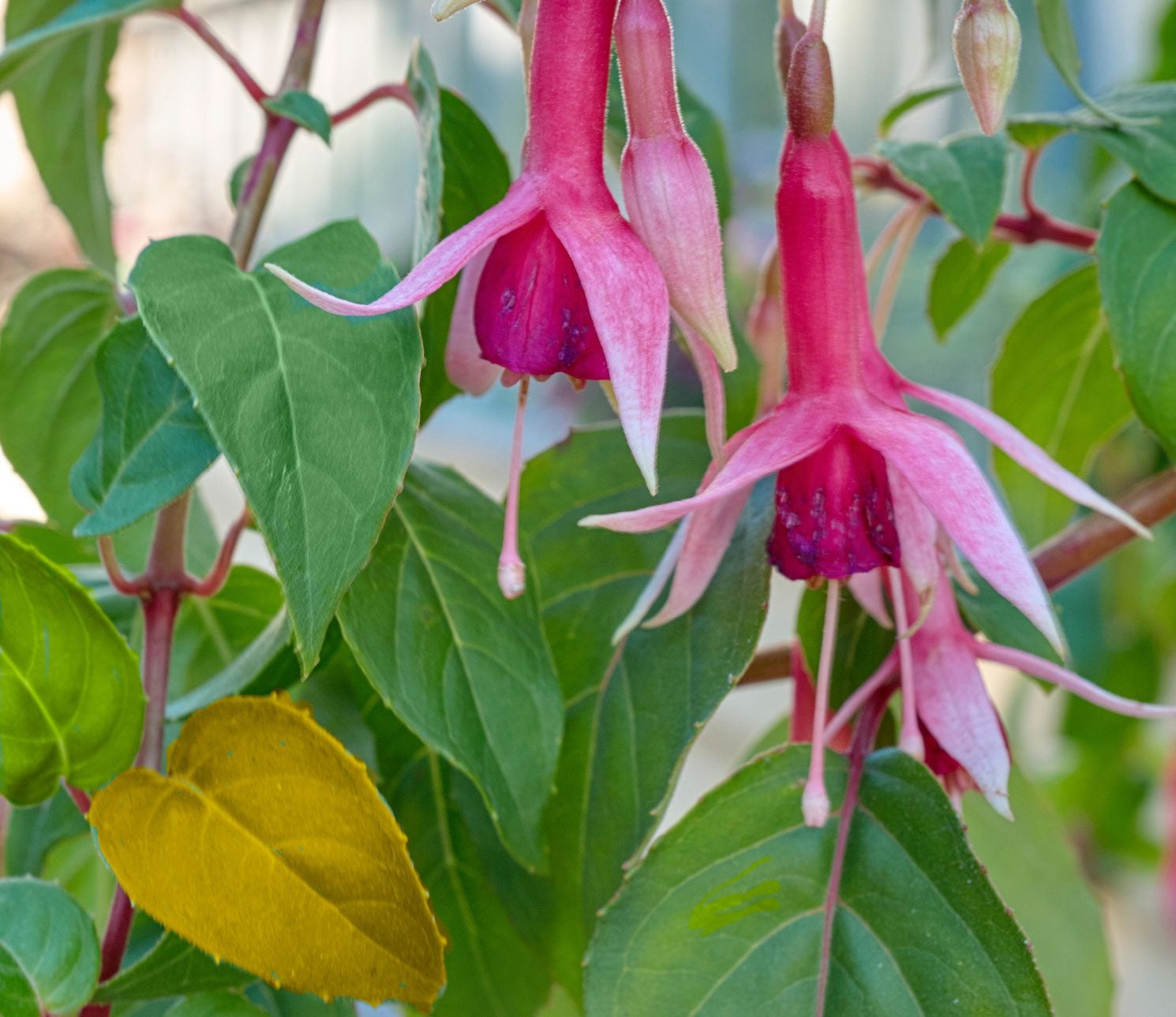Yellowing Fuchsia Leaves: Why Are My Fuchsia Leaves Turning Yellow


Fuchsias are beautiful and incredibly diverse flowering plants that are very popular in containers and hanging baskets. Care for fuchsias is usually very straightforward-- as long as you water them regularly, provide good drainage, and place them in partial sun, they should thrive and bloom all summer long. Sometimes, though, problems arise. Yellowing fuchsia leaves is one of the most common problems and can mean one of a few things is wrong with your plant. Keep reading to learn more about what to do when your fuchsia has yellow leaves.
Why are My Fuchsia Leaves Turning Yellow?
The most common cause of yellowing fuchsia leaves is inadequate watering. This can be due both to over and underwatering. If leaves don’t get enough water, they can’t perform photosynthesis and they lose their healthy green color. If they get too much water, however, their roots get clogged and can’t supply the leaves with enough oxygen, resulting in yellowing fuchsia leaves. How do you know if you’re watering too much or too little? Feel the soil. If the soil is wet to the touch or puddly, cut back on watering. If it’s dry to the touch, water more. You should water your fuchsia every time the top of the soil is dry to the touch, but no more. Another possible reason a fuchsia has yellow leaves is a lack of magnesium, especially if your fuchsia has been in the same pot for several years. Its magnesium supplies may have been sapped dry. You can add magnesium back to the soil by applying Epsom salts dissolved in water. It is possible that your fuchsia with yellowing foliage is simply part of a natural process. As fuchsias grow, their bottom leaves sometimes yellow, wilt, and fall. This is normal. If it’s only the leaves at the bottom of the plant that are yellowing, don’t worry. The plant is healthy and just making way for new growth. Yellow leaves on fuchsia plants may also be a sign of disease, though.
- Fuchsia rust is a disease that appears as yellow spores on the bottom and sometimes on both sides of the leaves.
- Verticillium wilt causes leaves to turn yellow and brown. It can kill leaves or entire branches.
If you see either of these diseases, separate the affected plant from healthy ones. Remove the affected branches, wiping your shears with alcohol between each cut. Treat the new branches that grow in with a fungicide.
Sign up for the Gardening Know How newsletter today and receive a free copy of our e-book "How to Grow Delicious Tomatoes".

The only child of a horticulturist and an English teacher, Liz Baessler was destined to become a gardening editor. She has been with Gardening Know how since 2015, and a Senior Editor since 2020. She holds a BA in English from Brandeis University and an MA in English from the University of Geneva, Switzerland. After years of gardening in containers and community garden plots, she finally has a backyard of her own, which she is systematically filling with vegetables and flowers.